The acronym RAM refers to Random Access Memory. RAM provides the essential function of holding all the data that a computer is actively using. In this context, RAM is considered volatile, meaning that when the computer loses power, whether due to a normal shutdown or some type of power failure, whatever is stored in the RAM at that time disappears. Also in this context, RAM can be used over and over for the long term.
Finally, in this context RAM is for temporary storage while you are actively using the computer - compared to non-volatile memory which is used for things like Solid State Drives and USB Flash Drives. The non-volatile memory in those type of devices allows you to write and save the information to the memory until you specifically delete or overwrite the information, even when they do not have power to them.
This document is primarily about RAM used as temporary storage for a computer.
While some mobile devices have memory that is soldered to the motherboard, the modules used in desktop computer builds look like these:
The first image shows a basic memory module. This is what you would see if you opened up a regular pre-built computer from Dell or HP.
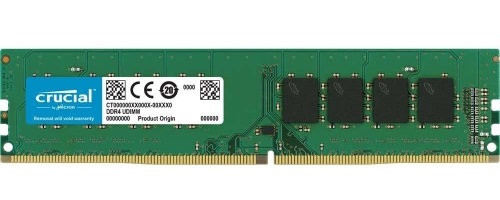
The second image shows a RAM module with a heat spreader, which is a passive heatsink that helps cool the RAM.

The third image shows RGB enabled RAM. While RGB components can be used in any system, they allow control of the lighting color when installed in compatible systems.

As it’s naming convention states, DDR4 is the fourth iteration of this form of memory. Below are their predecessors DDR3 and DDR2.
DDR3 Desktop Memory Module:
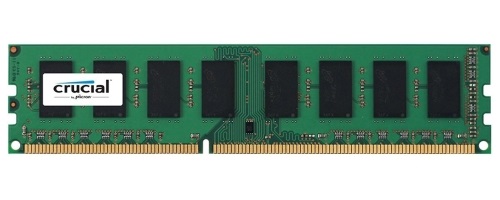
DDR2 Desktop Memory Module:
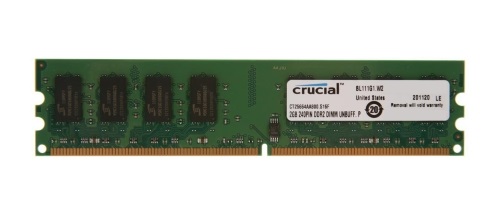
The main difference in these modules is not that noticeable at first. While they all share the same dimensions, there are two key difference between each iteration. The first of which the amount of copper contacts, or pins, the module has. The other is where the notch in the module is located, this is used to stop each type from mistakenly being inserted into newer or older boards. More to the point, it is to stop the contacts from being damaged. You can see the contacts and notch on a DDR4 modules below.
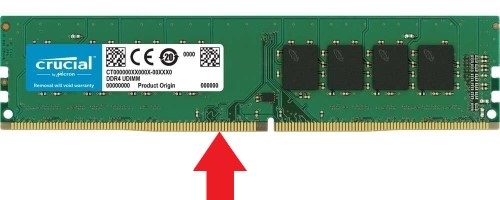
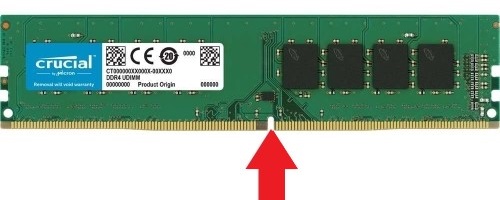
Outside of physical differences, most modules will come with a sticker containing information about it. What is listed may vary from one manufacturer to another, but the key information will be the type (DDR#) along with possibly a part number, and the manufacturer information. Below you’ll see that on the module we’ve been using for most of our pictures, this one is a Crucial DDR4 module.
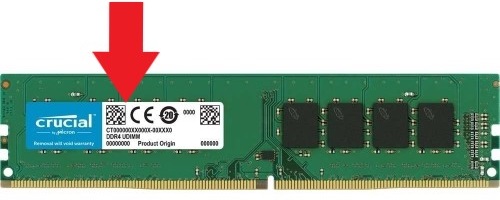
Finally we have the points where the slot clips hold the memory in place. These have remained the same for the majority of modules, but the slots have recently gone from top and bottom lever clips to a single clip, with the other side working more like a wedge.
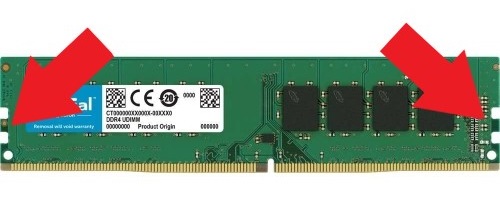
While this document focuses on desktop RAM, the principles are the same for laptop RAM modules. In general, the main difference in desktop RAM vs. laptop RAM is the size of the board and the number of pins. The concepts of notches, pin connections, voltage, and other items are similar though not exactly the same.